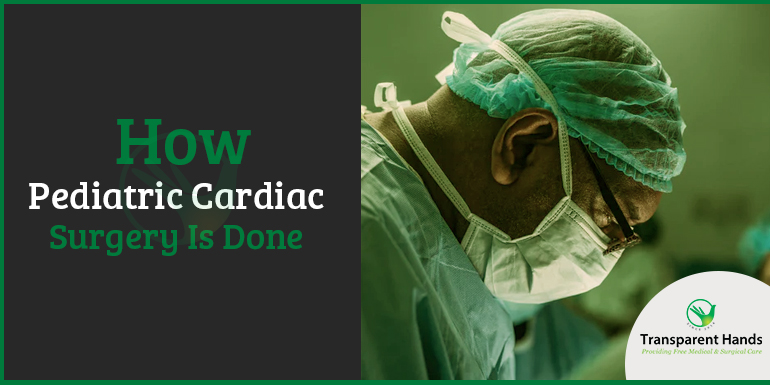How Pediatric Cardiac Surgery Is done

Introduction
We don’t mean to say that the cardiac issues of adults are less painful than those of children, don’t get us wrong. But won’t you agree that seeing a kid suffer from a cardiac issue hits you a bit differently? Seeing the little ones in pain and suffer from serious diseases or conditions is, perhaps, one of the toughest moments in their parent’s life. Thanks to the advancements in the medical field, most of the cardiac issues are now treatable. Even though it is the last option that should be used, cardiac surgery can give hope and life to those who are on the brim of losing it all. In this discussion, we are going to talk about pediatric cardiac surgery and answer numerous questions associated with this topic.
Why pediatric cardiac surgery is useful?
Pediatric cardiac surgery is mostly an open-heart procedure that involves stopping and opening the heart. There are several cardiac defects for which a pediatric cardiac surgery can prove to be an effective treatment. Included among these defects are ventricular septal defects, tetralogy of Fallot, AV canals, and various defects of arterial nature. Many kids all over the world can defeat these cardiac disorders through targeted and efficient pediatric cardiac surgery. Yes, we know there are risks and complications to be considered but isn’t it just wonderful?
Preparation for surgery
It is not like surgeons will drag a kid to the OT the moment they recommend a pediatric cardiac surgery for a kid! There is a chain of events, a protocol that must be followed in this regard. The evaluation board which compromises of a cardiologist and a cardiac surgeon will monitor the patient’s health status. Mostly, this evaluation consists of blood tests, X-rays of the chest, ECG, and a few other standard tests. This evaluation is of utmost importance as it generates valuable information that can prove quite beneficial during pediatric cardiac surgery.
Open-heart pediatric surgeries: An overview
The first step in an open-heart surgery is sternotomy, which means cutting through the breast bone. While making incisions to access the heart does sound terrifying, we can assure you that it is quite safe. And repairing the damage that is inflicted is similar to mending a bone through wires, a hundred percent recovery with no defects is guaranteed most of the time. Because infants and young kids don’t feel a lot of pain courtesy lack of tissues, physicians avoid giving them too many painkillers.
The next step in pediatric cardiac surgery is the removal of the thymus gland so that the surgeon can access the heart with ease. Next, the pericardial sac must be opened so that the heart can be accessed by the surgeon. Please note that pericardium is the layer in which the heart is enclosed. Only a small portion of the pericardium is removed. Next, the defect that has necessitated the pediatric cardiac surgery is tackled cautiously. All this time while the infant’s heart is open, a heart-lung machine is responsible for the circulation of blood through the child’s body.
Risks associated with pediatric cardiac surgery
By no means, what we just described sounds anything like fun. Some many risks and complications are associated with pediatric cardiac surgery. All parents who have been advised or recommended must be aware of these highly probable risks. We mentioned the heart-lung machine that pretty much keeps one alive during an intervention. Well, if the machine doesn’t pump efficiently enough, this can lead to inadequate perfusion of organs and tissues. Some of the body parts might not get the supply that they need. In other cases, inflammation and embolization have also been reported. So, before sending an infant to OT, one must be mindful of these complications.
Are pediatric cardiac surgeries successful?
Of course, nothing can be said with certainty but pediatric cardiac surgeries have been reported to be extraordinarily efficient against septal defects. But then again, the outcome of such a surgical intervention depends on a multitude of factors and not just one.
Conclusion
This is quite a broad topic but we have tried our best to summarize the happenings of cardiac surgery for you in this short space. There is so much more to learn about such medical procedures. We hope that you learned something, if not everything, from this discussion. On this optimistic note, we bid you farewell!










Leave Your Comments